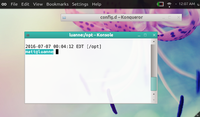Gala is the name of the WM, its compositing features are based on libmutter, but I believe it can run without them, although I haven't tested it. But if not - it's Linux, you can just swap Gala for whatever you wish.
Still, compositing in Pantheon/Gala is done very conservatively, nothing flashy or heavyweight like in Compiz, just your basic fade-in/fade-out and smooth animations, even super old integrated Intel GPUs with no memory of their own can handle it.
-- edit --
I checked, it does run well without OpenGL.
Oh, and its Wayland support is pretty advanced (official support slated for the next release), should Pyra ever wish to go this way.
-- edit --
Correction; it does run well without 3D acceleration - Gala still requires OpenGL. Nonetheless, Gala doesn't have any special features besides compositing, one could easily make a similar theme for Openbox and run Pantheon/Openbox, or any other WM.

Another good thing about Pantheon is that it's very intuitive, OSX-like. I installed eOS for all my friends and relatives with old machines, who were frustrated with how slow they ran, but weren't technically inclined to use "real" Linux. I didn't even have to explain where is what, it's that self-explanatory.
As for power users, it doesn't hide anything either, there's even a nice 3rd party app for changing advanced settings of the DE. I'd put Pantheon/eOS somewhere between XFCE, Gnome 3 and Unity, with usability, integration, and performance being the main ideas behind it.
I will work on the default XFCE-Config as soon as I got a Pyra with screen, otherwise it's not possible to decide the needed sizes of all items

But I'm more worried about "desktop"programs from the PC that are not made for such tiny screens or mobile devices at all. I can imagine browsing with Firefox will result in very tiny fonts, it's even already small on the Pandora.


